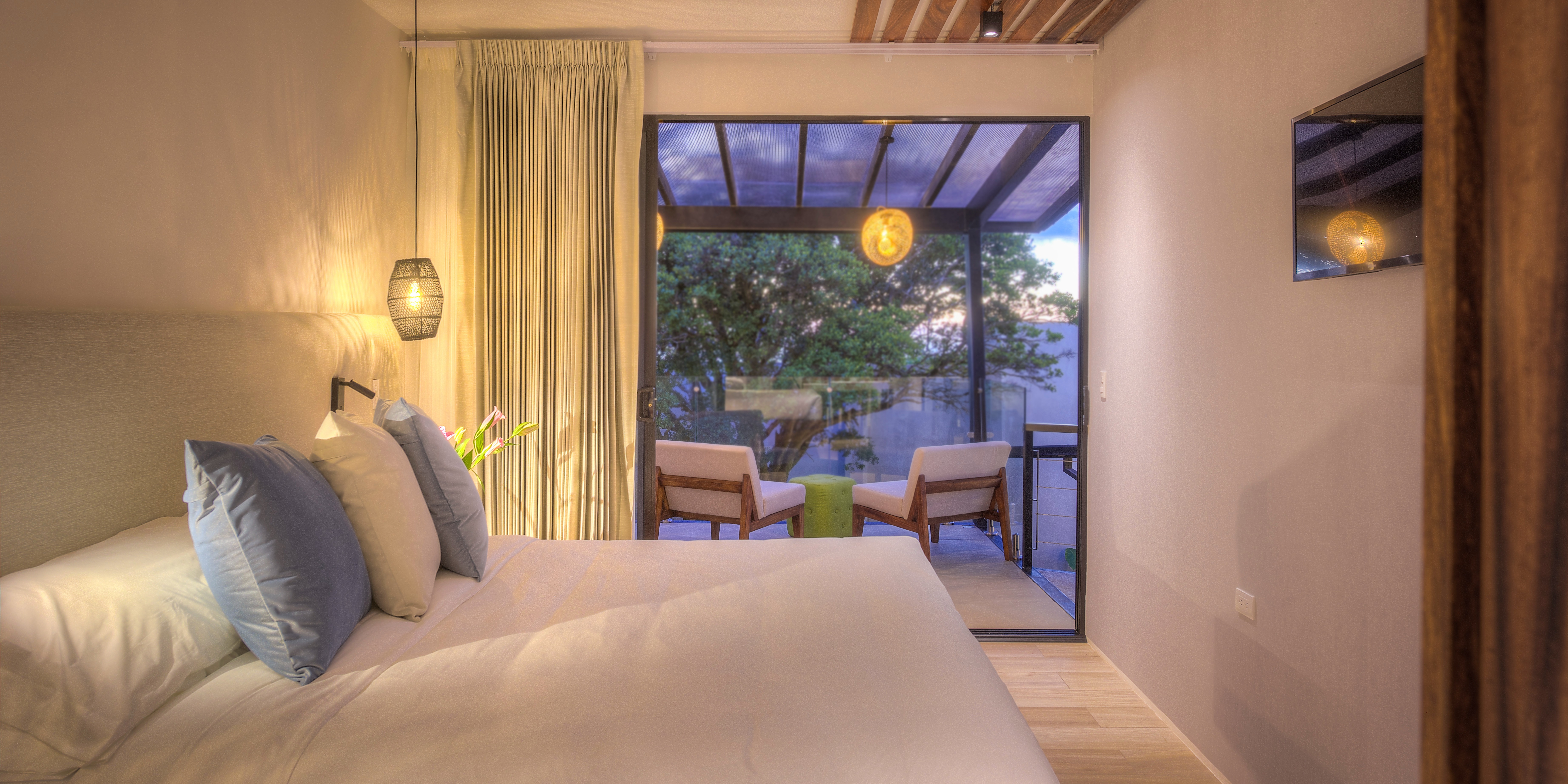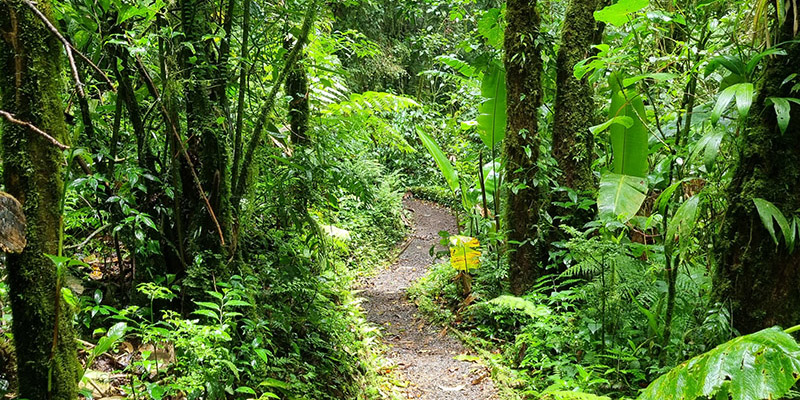Behind the Scenes of the Children's Eternal Rainforest Preserve

When you’ve been in the tour business for as long as we have you pick up on a few local favorites. Especially when you have watched them grow and evolve over the course of 15 years working together.
Even while we work to expand our family business with the Ocotea Boutique Hotel, our hearts are still connected to the beauty all around us and we still love sharing the rich bounty that mother nature has provided us and all of our guests and traveling companions.
That’s why the Children’s Eternal Rainforest Reserve (also known as the Bosque Eterno de Los Niños, or BEN) will always hold a special place in our hearts. As one of the many fantastic reserves in Monteverde, they are a wonderful place to visit, and we work within our community to garner support for their very important mission to preserve and protect the biodiversity that Monteverde is blessed with.
That’s why this article will take you on a journey- under the shaded green of the canopy and behind the scenes- so you can explore everything that goes into managing this kind of massive endeavor.
A Brief History of the Children’s Eternal Rainforest
The Children’s Eternal Rainforest Reserve and the forest itself has a rather fascinating history. It was started by a group of local conservationists, who were concerned by the government’s lack of action in terms of forest preservation, and banded together in 1986 to create the Monteverde Conservation League (MCL). The league’s main focus was to raise money to purchase forests throughout the Monteverde region so that the land could be protected from the agricultural development that had caused a large portion of the native forests to be clearcut.
Together with conservationists from Canada and the US, the MCL created a fundraising campaign and a slew of initiatives with the goal of buying as much of the existing rainforest property as possible. Obviously, raising awareness about the dire consequences of clear-cutting vast amounts of rainforest was key to successfully gathering donors and support worldwide, so in 1987 a US Biologist traveled to Sweden to meet with like-minded people and during her visit, she was asked to speak to school children there about the issue.
The children decided that they wanted to raise funds for the Rainforest, and were put in touch with the MCL, eventually raising enough money to purchase 6 hectares of forest next to the property already owned by the MCL. But their generosity didn’t stop there. Over the years school children from more than 40 countries have donated funds to the park, and now, with the strength of donations and support from youth around the world, the BEN now protects over 22,000 hectares of forest, making it the largest private reserve in Costa Rica.
The reserve is home to 7 of Costa Rica’s 12 life zones with elevations that range from 450 to 1800 meters above sea level.
Honoring Tremendous Generosity
In honor of the school children and their dedication to their planet, the park has become known as the Children’s Eternal Rainforest. It is a shining example of what humankind can accomplish when they join together over common interests and goals. Today the park provides important research and education into subjects such as sustainability, reforestation, and biodiversity, both at an academic level and through eco-tourism.
They have even created two lodges so that visitors who wish to stay can purchase accommodations, meals, and access to the trails. Students who take part in one of their educational programs or internships can also choose to rent these accommodations and stay onsite during their visit. However, the majority of visitors come purely to walk the trails and explore via self or guided tours.
Obviously running such a massive and complex organization takes a huge amount of effort. Not only to keep all of its moving parts running efficiently, but also to ensure that the thousands of visitors who come to the park each year don’t damage the delicate ecosystems that they are working to preserve.
Why Do They Do It?
Simple. People can’t care about what they don’t understand. By introducing guests from around the world to the intricate beauty of the forest, and helping them to understand the fascinating ways in which they interact and support one another, the team behind BEN and so many other reserves help visitors understand that we, as humans, are just as much a part of the world around us as every other living thing.
We have a responsibility to do our part to maintain it, even if that part is simply making an effort to reduce our footprint, clean up after ourselves, and be mindful of how the things we do (or don’t do) can affect our planet.
Once I understood that my next question was how do they do it? To find out, I got in touch with Lindsay Stallcup, who is the Reserve’s Executive Director, to ask some questions.
Collaboration is Key |Working Together to Preserve our Planet
When I asked about the internal working of the BEN, and what set it apart from the others, I was surprised by Director Stallcup’s response. She immediately explained that it really is a group effort to keep this reserve humming, accomplished in large part by a dedicated group of individuals all working together both within the Children’s Eternal Rainforest, along with a larger group comprised of local conservators, educators, and researchers who are spread throughout all of Monteverde’s Reserves. Let me explain…
Not a Solo Effort!
One of the things that makes Monteverde’s community so unique is its ability to work together for the common good. The Children’s Eternal Rainforest or BEN (short for the Spanish “Bosque Eterno de los Ninos) is at the very center of a collection of reserves that provides protection to a huge variety of native species of flora and fauna. This larger block includes the Monteverde Cloud Forest Reserve, Arenal Volcano National Park, Santa Elena Cloud Forest Reserve, and the Alberto Manuel Brenes Biological Reserve. Together, they make up a whopping 50,000 hectares!
Three of these parks are owned and operated by the Costa Rican Government, while the Monteverde Cloud Forest Reserve and the BEN are both owned and operated by non-profit conservation organizations and must raise funds annually to cover the cost of protecting and preserving the forest. Regardless of the fact that they are all separate entities with different owners and individual needs- they share a common goal and that makes them a team.
Running the Reserve
The BEN’s operations include environmental education, visitor services, forest patrols, administration, and the maintenance of trails, infrastructure, and property boundaries to ensure that the forest can thrive.
The BEN has 4 areas open to the public. All have trails that are available for both guided and unguided tours, and two of the areas (Pocosol and San Gerardo) offer lodging and meals, for an off-the-beaten-path forest experience.
Protecting Biodiversity
The Bajos del Tigre Reserve houses a rare “rain shadow forest” which also represents one of the most threatened ecosystems in the country, making its protection and preservation even more vital to the health of the Reserve, and the world,
The BEN is home to 5% of the species of birds on the planet, as well as 550 species of orchids and 6 species of felines.
It is also home to the Three-wattled Bellbird, an endangered species which can be found throughout the BEN. The Bellbird is an altitude migrant, meaning that each year it travels over a huge forest area from the pacific Lowlands, up over the Continental Divide, to the Caribbean Lowlands in Nicaragua, following its favorite food source: the wild avocado fruit. While it travels, it eats the native avocado fruit and then disperses the seed (through its excrement) wherever it roams. In essence, the Three-Wattled Bellbird relies on the avocado tree for food and the avocado tree relies on the bird for propagation… Mother nature truly is brilliant.
Protecting Green Takes Green!
The BEN has 3 primary income streams that are used to fund the conservation of the forest and its biodiversity.
100% of the funds collected from admission fees and guest purchases go back into the care of the reserve. 100%!
The park, which has no corporate sponsors, also relies heavily on donations that come in from around the world, and from a program run by the Costa Rican government which pays qualified landowners a set amount per hectare for environmental protection.
Behind the Scenes- A Day in the Life of Park Staff
My next question had to do with all of the work that goes on behind the scenes that guests never see, and may not realize is happening. I asked her what the staff are responsible for during a typical day, and the answer was startling.
Welcoming the Public
The park has 4 sites open to the public, 2 of which contain visitor-guest lodges, all of which must be staffed, cleaned, and maintained.
As the lodges also offer meals, there is staff dedicated to food prep, service, and cleanup of the kitchen and dining areas.
There is staff on-site to guide visitors, answer questions and generally help them with whatever they need.
Park Patrols
4 Forest rangers patrol the entire 22,000+ hectares! They are responsible for protecting the park property and resident species from poachers, squatters, and unregistered guests, as well as ensuring that livestock from neighboring properties don’t inadvertently wander onto the reserve and consume new growth before it can take root.
Poachers don’t just kill animals for food, or sport, they have also been known to accost them to be sold to collectors. The same goes for rare or endangered plant life, like orchids and hearts of palm, and… believe it or not… water!
Park rangers also watch out for populations that can damage the all-important water table.
Sharing the Knowledge and Running the Reserve
There are staff members dedicated to environmental education (more on this later),
As well as the staff who must manage the day-to-day challenges of administration, such as staffing, financial issues, fund-raising, and much more.
All of the buildings, trails, fences, signage, and so forth must be maintained by a dedicated group who often trek miles of trails to ensure that guests can experience the park safely and easily.
And all of this is done by a total of 30 BEN staff members!
A Wild Life Surrounded By Wildlife!
I asked Lindsay whether they had ever had to close or change trail routes to prevent damage to the ecosystem from visitor traffic. While she said that the issue hadn’t arisen yet, she did admit that they had rerouted one of the trails in the past, because a mother Puma had been seen on the trail cam nursing her cubs in the middle of the trail, or because of a natural occurrence such as a landslide.
Putting it All Together to Make a Difference
All of these activities are vital to the proper management of this huge organization, but perhaps none more so than environmental education. Why? Because the success of the park relies so heavily on the support of others, and donations, but also because it is through understanding the needs and cycles of the forest that it will be carried on for future generations.
Not only do these dedicated individuals ensure that the forest remains healthy and viable and that the delicate ecosystems within thrive, but they also inspire children who may grow to become their generation's leaders in conservation, sustainability, forestry, or biology.
The park has 2 full-time educators, one located on each side of the country. On the western side (Monteverde) there are environmental outreach efforts that, as members of the Monteverde Commission on Environmental Education (CEAM) teach topics like biodiversity, sustainable practices, and water conservation to people ranging from school children to adults.
There are also on-site internships so that post-secondary students can enjoy a hands-on learning experience led by experts in the field and in an environment that allows them to see firsthand how important environmental research, sustainable practices, and water conservation is to the planet as a whole.
On the Caribbean side, they work with the local population and provide education about a wide variety of topics, such as agriculture, the damaging effects of poaching and illegal species extraction, as well as providing workshops that teach sustainable practices, waste disposal, and water conservation, so that residents can do their part to assist in the preservation and conservation of their own way.
A Final Word from the Children’s Eternal Rainforest
I asked Lindsay if there was anything specific she wanted me to share about the Children’s Eternal Rainforest Reserve, and this was her answer (paraphrased).
People who visit Costa Rica have the power, in their hands and in their pocketbooks, to support the organizations and causes that are important to them. By visiting a non-profit organization like the BEN, visitors can be sure that 100% of the money they spend is being used to protect and preserve the forest and the species that live there. All income from visitation and donations goes directly back into preserving this incredible forest - through forest patrols, environmental education, research, and other crucial programs. Only a few tourism destinations in Monteverde can say that!
If you would like to make a donation to the park, simply click this link.
Or click here to book a guided tour of this truly amazing place.
Thank you to the park for so graciously answering all my questions and for sharing some of their lovely photos.





